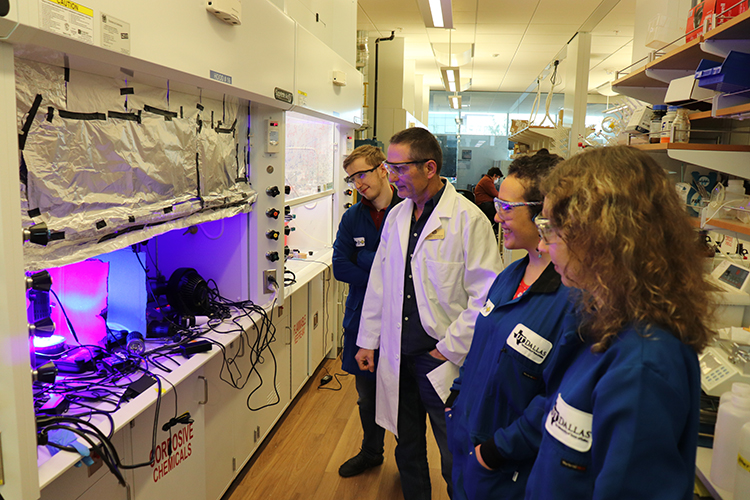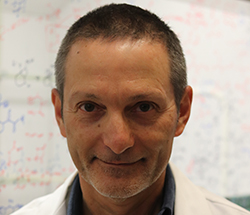
Dr. Vladimir Gevorgyan, the Robert A. Welch Distinguished Chair in Chemistry, recently was awarded funding from the National Institutes of Health (NIH) to investigate transition metal-radical-hybrid methods for organic synthesis. The grant totals $1.2 million over the next three years.
Gevorgyan’s research focuses on developing new methods to synthesize molecules that are valuable building blocks in synthetic organic chemistry and materials science and are of pharmaceutical relevance.
According to Dr. Mihaela Stefan, interim head of the Department of Chemistry and Biochemistry, Gevorgyan’s work is of great importance in the field of organic chemistry. His novel methodologies will aid in creating more sustainable synthetic tools for medicinal chemistry.
“By focusing on improving in-lab methodologies, Vlad is placing an emphasis on sustainability and reducing the industry’s carbon footprint, which gains in importance by the hour,” Stefan said.
Research in Gevorgyan’s lab aims to develop and understand new chemical processes from which tools that are more powerful, more selective and more environmentally safe can be created, then used in a variety of new fields.
“We are developing new synthetic methodologies, emphasizing the mechanisms of the newly discovered transformations, which not only improves these processes but also allows for the establishment of many other new reactions,” Gevorgyan said.

“Transition metal catalysis is one of the most powerful tools for making and breaking chemical bonds. Among these, palladium-catalyzed transformations may be the most popular in laboratory settings in academia and industry,” he said.
The methods being developed can be used for making bioactive molecules and structures used in materials science.
“We’ve developed a new Pd-catalysis paradigm, a visible light-induced one-electron chemistry. Not only do these reactions proceed at room temperature, but also do not require external photosensitizers and oxidants,” Gevorgyan said.
Gevorgyan said his research has been continuously supported by the National Science Foundation and the National Institutes of Health.
Help us leave the planet a better place for future generations. Your support for the School of Natural Sciences and Mathematics funds scientific discoveries with real-world applications, student and faculty recruitment, and academic scholarships.